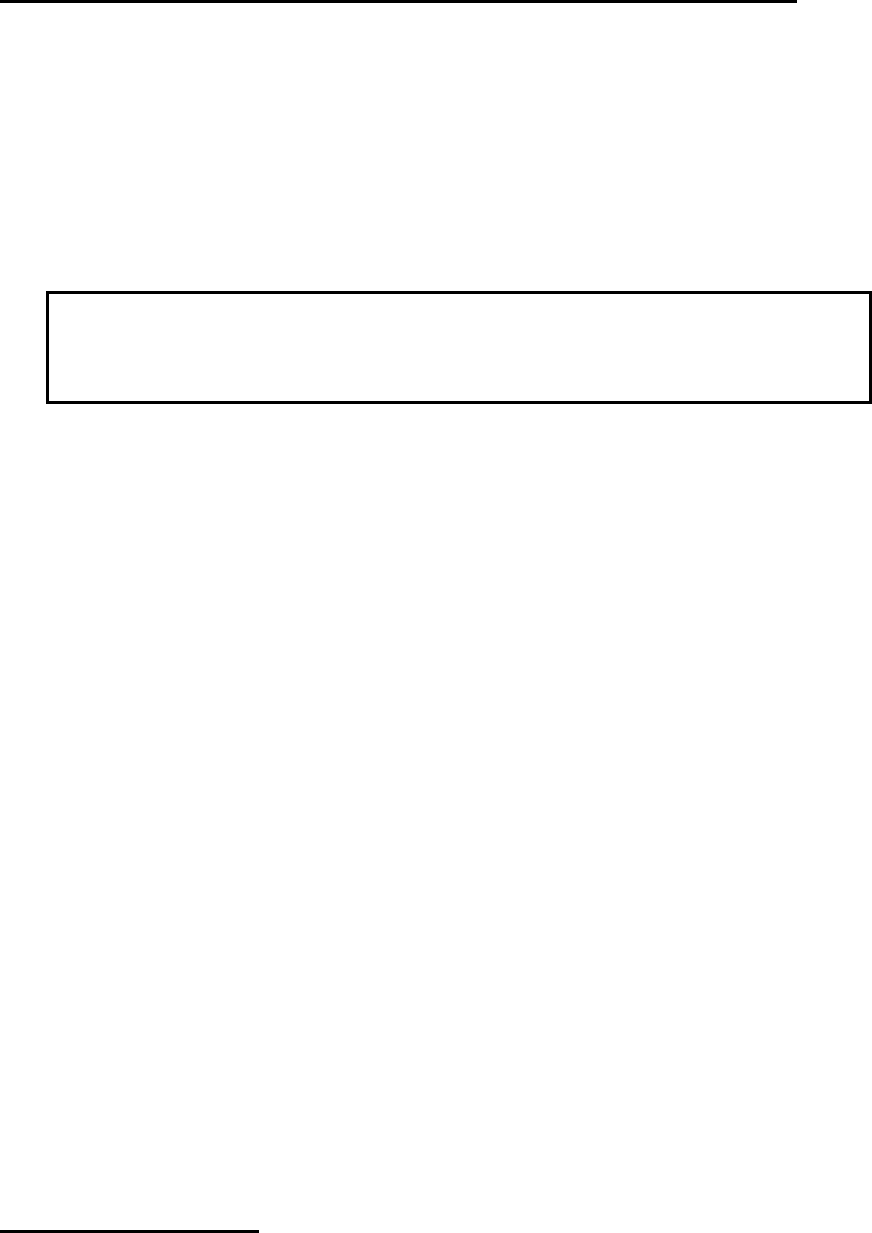Crescend Technologies 7VB916-0140 800VC015-0R2RF User Manual
Crescend Technologies LLC 800VC015-0R2RF Users Manual
Users Manual

VOCOM Products
RF Amplifiers
Instruction Manual
For Model
800VC28-015-XXR
RF Power Amplifiers
THE FOLLOWING INSTRUCTIONS ARE FOR USE BY QUALIFIED
RF SERVICE PERSONNEL ONLY. SERVICE PERFORMED ON
VOCOM’S AMPLIFIERS MAY VOID THE MANUFACTURER’S WARRANTY
VOCOM Products Company, L.L.C.
2255 Lois Drive
Suite 1
Rolling Meadows, IL 60008
Quality since 1979
TABLE OF CONTENTS
800VC28-015-XXR
RF POWER AMPLIFIER
SECTION 1.0 OPERATING INSTRUCTIONS
SECTION 2.0 SPECIFICATIONS
SECTION 3.0 TEST
SECTION 4.0 PROPER AMPLIFIER SETUP
SECTION 5.0 APPLICATION NOTE

SECTION 1: OPERATING INSTRUCTIONS
GENERAL:
To effectively use the 800VC28-015-XXR RF power amplifier, the operation capabilities
of the unit must be known. This section describes input/output connections and
environmental operating conditions. Understand the operating of limitations of the
amplifier before installation is attempted.
OPERATING VOLTAGES:
Warning: This unit is designed for operation from 28 volts DC negative ground
systems. The chassis must be kept at earth potential. The negative
(black) DC power lead is connected directly to the chassis. Operation
in positive ground systems may cause injury.
All power measurements and specifications are met at 28 volts DC as measured at the
DC input terminals. For best performance, a regulated power supply is recommended.
Operating voltage range is from 24-28 volts. Power will be reduced slightly at DC
voltages below 28 volts. Operation a 28 volts or higher is to be avoided as this will
significantly reduce transistor life.
POWER CORD IDENTIFICATION:
Two cables extend from the amplifier. The RED lead is to be connected to the
POSITIVE power supply terminal. The BLACK lead is to be connected to the NEGATIVE
power supply terminal and earth ground. Use caution not to reverse the DC polarity and
do not connect to an AC power line.
OPERATING TEMPERATURE:
The amplifier may be operated when the ambient air is between O and 50 degrees
centigrade. If operated in a closed cabinet, verify that the air temperature flowing over
the heat sink is in this range. The amplifier/power supply combination may generate
over 1500 watts of heat. The amplifier is cooled by convection flow across the heat sink
fins of the unit. Maintain a minimum of 4 inches clearance. A thermal shut-off circuit is
provided that will interrupt the DC power input to the first RF stage should the heat sink
rise above 60 degrees C. Operation in confined areas may cause the unit to shut-off
thermally. Installations where thermal cut-off occurs frequently should be avoided. The
unit may be stored in temperatures between -20 and + 70 degrees centigrade.
Keep the fan intakes free of dust.
TROUBLE SHOOTING:
LOW POWER OUTPUT:
The most common amplifier problem is low power output. If the installation test shown in
Section 3 is run the power input/output specification on the nameplate should be met,
especially when working into a dummy load, since this is essentially the test run at the
factory.
If working with BIRD wattmeters, remember that the power output reading is specified at
+/-5% of full scale. In other words, a wattmeter with a 100w element gives readings of
+/-5 watts when the wattmeter is reading full scale. Mid-scale readings have much
lower accuracy. Always use an element closest to full scale for maximum accuracy.
Treat your element with extreme care. Dirty or dropped elements always read low.
Make sure that your power supply is adjusted to 28 volts. The input/output powers
specified on the nameplate were taken at 28 volts. Measure the voltage at the amplifier
terminals to be sure all the DC connections are tight and that the amplifier is seeing 28
volts during operation. Check the manufacturer's ratings to be sure the CONTINUOUS
rating of the power supply is sufficient to power the amplifier. If the power supply is
slumping, the amplifier output will go down with the voltage.
Look at the drive power while the amplifier is operating. Many exciters will put out
different powers into even slightly different loads. Low drive power will produce low
output power. Do not assume that your exciter output power with the exciter running
into a dummy load will be the same as when the exciter is running the amplifier. A
strong RF field can sometimes cause an exciters to increase or decrease power as well
as go spurious. In-band spurious signals maybe amplified. The change in signal level
will show up on the input wattmeter. RF fields can also cause linear power supplies to
fall out of regulation. This should be seen on a voltmeter (CAUTION: RF can effect
digital voltmeters, too.)
Low (or high) output powers can be the result of a high output SWR. Carefully check
your loads and connecting cables.
NO OUTPUT POWER:
After checking the above items, be aware that there is protection circuitry. Check with
the factory if you suspect that the internal protection has or is operating. As a rule, if the
front panel light and fan are operating and output is zero, the SWR circuit has operated
(usually with an audible click upon key-up.) If the SWR protection were operating, you
would notice the output wattmeter "jump" briefly upon key up and then return to zero.
If the front panel light does not light, either the input drive isn't high enough to trigger the
amplifier on or the amplifier has disconnected itself from DC power. The amplifier will
reset itself when it cools down. (Some power supplies will "spring up" in voltage when a
heavy load is released and settle down to normal after 100-200 milliseconds. This can
damage an amplifier.)
If all else fails, give us a call. We'll be glad to help!

SECTION 2: SPECIFICATIONS
WARNING: Do not exceed 15 watts output. Do not exceed
nameplate drive power by more than 5%. Do not
exceed 28.0 volts while operating.
FREQUENCY: 840-960 MHz range. Factory set to specific frequency
on ID label.
FREQUENCY RANGE: May be operated within + or - 10 MHz of the factory set
frequency without tuning.
INPUT DRIVE POWER: As specified on amplifier ID nameplate. This is the
power measured during final inspection that was
required to reach 15 watts output.
MAXIMUM INPUT DRIVE POWER: Nameplate input drive power +5%
MAXIMUM TEST OUTPUT POWER: 18 watts (Pulsed output period not to exceed 100 mS)
MAXIMUM RATED OUTPUT POWER: Not to exceed 15 watts.
MAXIMUM RATED LOAD VSWR FOR 1.2:1 (<5% reflected power)
CONTINUOUS DUTY OPERATION
MAXIMUM VSWR RATING Infinite, all phase angles. (1 hour test time at 12V, no
WITHOUT DAMAGE degradation in output power upon return to normal load
and temperature). VSWR or thermal protection may
operate above 1.5:1 VSWR.
OUTPUT VSWR PROTECTION Inherent.
THERMAL PROTECTION 60 degrees C + /- 7 degrees C heat sink temperature.
Shut off; reset upon return to normal temperature.
INPUT/OUTPUT CONNECTORS Type N FEMALE.
SPURIOUS OUTPUTS < -75 dBc.
HARMONICS - 65 dBc or below.
COOLING DC fan cooled controlled by amplifier.

Section 3.0 TEST PROCEDURE 28 VOLT AMPLIFIER
1. BLOCK DIAGRAM:
2 EQUIPMENT NEEDED:
1. Exciter
2. Watt meters (2) with slugs for full scale readings
3. Power Supply (28 VOLT)
4. Dummy Load
5. Short coaxial cables (RG-8 or better) with appropriate connectors or adapters.
6. DC ammeter
7. DC voltmeter
3. INSTRUCTIONS:
1. Mount equipment in permanent location. Operate the amplifier at 24 volts into a
dummy load for initial tests.
2. The amplifier is of fixed gain design. In order to obtain a given output power (e.g.,
exactly 100 watts) the input or drive power must be adjusted. The factory test input /
output powers are shown on the serial number plate for your particular amplifier.
3. You must measure input power, output power, DC voltage, and DC current draw and
verify that all are within specifications. If you do not measure one of these
parameters, you have not done a proper installation.
4. After proper operation into the dummy load is assured, connect the amplifier to the
installation load (antenna, combiner, etc.) The output power and DC current draw
should not change significantly. If it does, a load SWR problem exists and must be
corrected.
Remember the specification output power is obtained only at 28 volts. Initial tests at 24
volts will result in lower output powers than at 28 volts. A reduction in drive power from
the value set at 24 volts will be required when the voltage is increased. Otherwise, higher
than rated output power will result.
TRANSMITTER
(EXCITER) WATT
METER WATT
METER
AMPLIFIER
BEING TESTED DUMMY
LOAD
+ -
28 VOLT POWER
SUPPLY. 24 VOLT
FOR INITIAL TEST.

Section 4: Proper Amplifier Set-Up
The life of an amplifier is dependent on many factors, but probably the most important is
initial set-up. Let's look at some typical cases demonstrating amplifier life. These
examples are based on the VOCOM‘s 800 MHz 140 watt amplifier.
Case 1: Run it "wide open."
Power Input: 200 mWatts
Power Output: 185 watts
Current Draw: 62A at 13.8 volts
Power consumed 62 X 13.8 = 855.6
Power output = 185.0
Power dissipated as heat 670.6 watts
Assuming a junction to case thermal resistance of 1.16 degree C per watt, and 7
transistors in this design: 1.16 X 670.6/7 + 60 = 171.1 degree C junction temperature.
The 60 in the above equation is an assumed heat sink temperature. Motorola has
published data on MTBF (see for example, AN-790) For the MRF 847 used in this
amplifier this equates to an MTBF of a little over 10 years. Converting MTBF to %
failures per year this equates to a 10% Failure rate per year PER DEVICE. In an
amplifier with seven devices, Motorola predicts a 70% failure rate per year if the
amplifier is operated at this point.
Case 2: Recommended operating point
Power Input: 200 mWatts
Power Output: 140 watts
Current Draw: 40 A at 13.8 volts
Power consumed: 40 X 13.8 = 552
Power output = 150
Heat dissipated = 402 watts
Following a similar calculation, the MTBF per device is 2000 years. In an amplifier with 7
devices the 5 % failure rate per year would be only 0.35%. The extra 35 watts is very
costly in terms of amplifier lifetime.
Conclusion: Set up the amplifier carefully. Measure the current draw and adjust the
drive for the best efficiency. At VOCOM, we carefully choose our power levels at each
stage of amplification to obtain total failure rates below 0.5% per year even in amplifiers
with MRF transistors. But it's up to you to set them up properly.

SECTION 5: APPLICATION NOTE
There are a number of low power fixed output exciters on the market and it has come to
our attention that may users are reducing the output power of these exciters by de-
tuning them.
NEVER REDUCE THE POWER INPUT TO THE AMPLIFIER BY DETUNING ANY
STAGE OF EITHER THE EXCITER OR THE AMPLIFIER!
De-tuning the exciter will almost certainly cause it to produce spurious in-band signals.
These spurious signals will be amplified by the amplifier. If they are high enough in level,
amplifier damage may result not to mention FCC involvement. If drive reduction is
necessary to keep the amplifier within operating limits, always use a power attenuator if
the exciter does not have a power control!
In an emergency, a power attenuator may be constructed out of a length of RG-58 or
smaller coax (see cable attenuation specs for your frequency). Also be aware that we
can adjust the drive requirement at the factory to match the fixed output exciter.